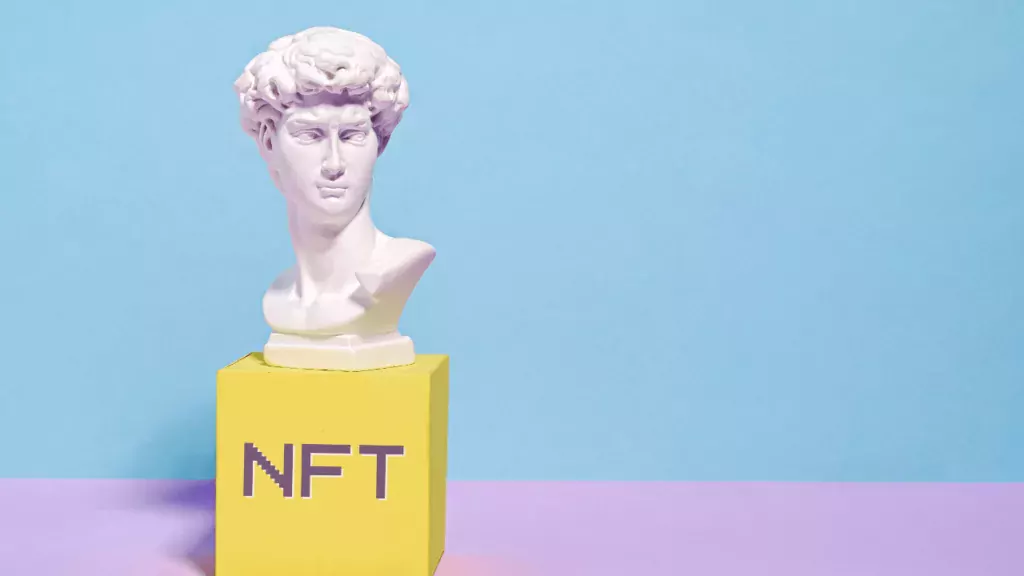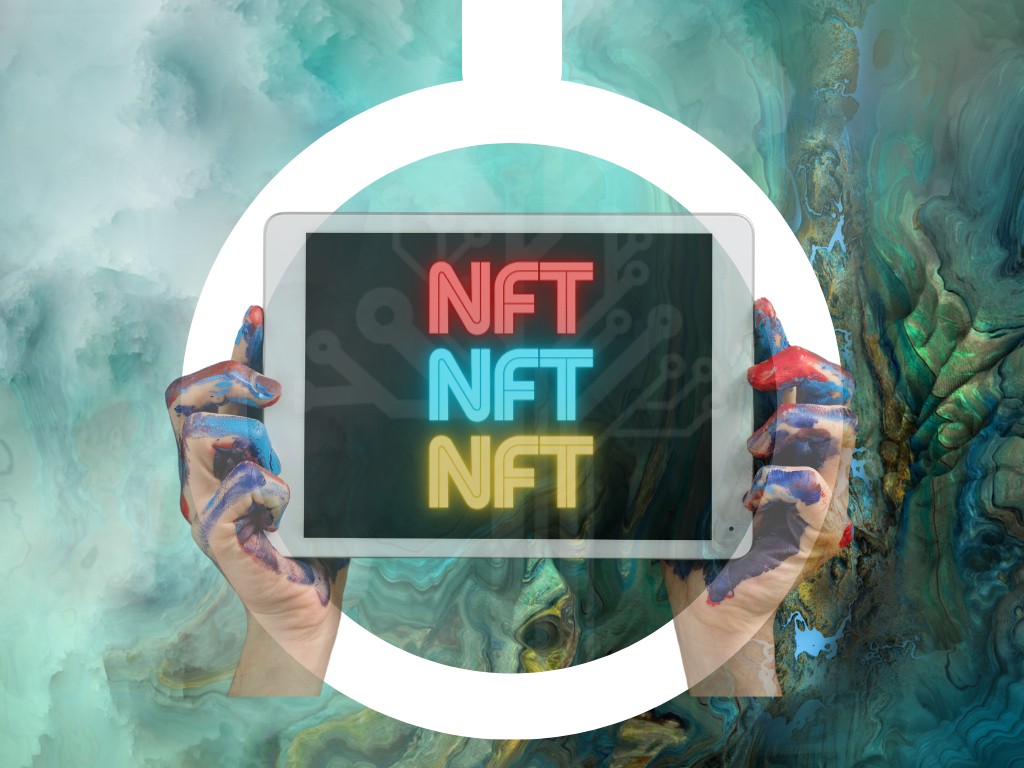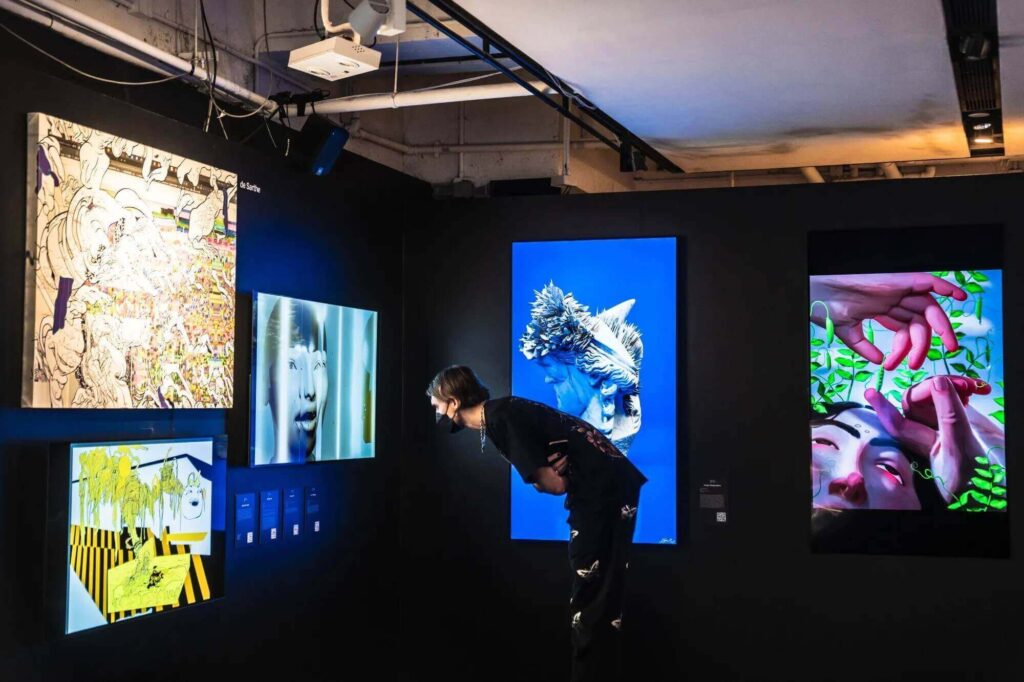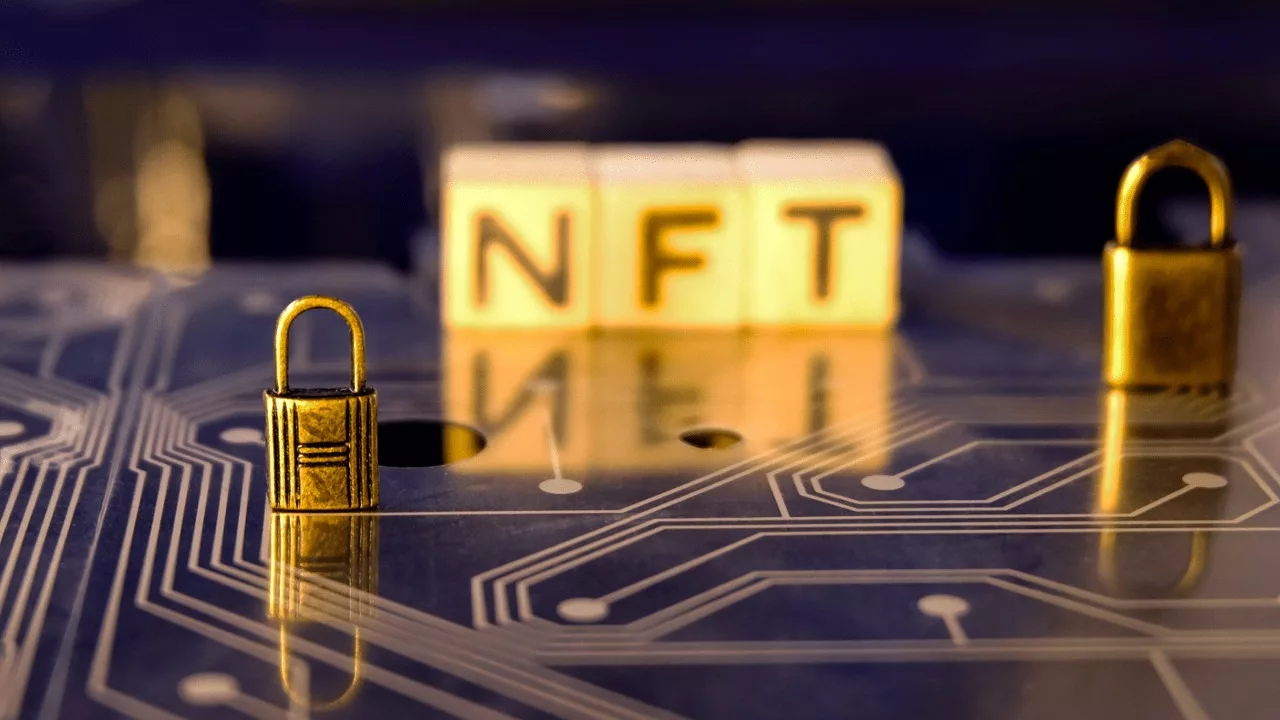NFTs In The Art World: Understanding Their Rise And Impact
NFTs In The Art World is a hot topic. In the global and digital environment of the 21st century, it is seen that virtual space plays an active role and leads to a continuous globalization process.
This evolution directs individuals to give instant reactions and share their views and thoughts through technological infrastructure. With NFTs in the art world, major changes are also taking place in the field of art.
The production process of art adopts the media dynamics in the virtual environment as the main center rather than traditional museums and galleries. In this way, art has the opportunity to be seen by millions of people with the opportunities provided by the internet.
Blockchain-based software and its development, among the latest innovations brought by the digitalization movement, enable information to be recorded in a transparent, unchangeable, and secure manner.
NFT (Non-Fungible Tokens) are certificates that automatically protect the ownership of digital assets through smart contracts and symbolize the uniqueness of digital works.
NFTs (NonFungible Tokens) are generally used to determine the ownership of digital works of art, but NFTs in the art world represent a new field that deals with the issue of defining and commercializing the ownership of all kinds of content created by users in the digital world.
This may be valid for limited or unique artworks, or it may be in the form of rules or patents that can be defined through smart contracts.
NFTs in the art world have gained an important place in the digital economy, especially with their increasing market share in 2021. NFT artworks, whose value is measured in millions, are expected to make even more profit to their investors.
What Are NFTs And How Do They Work In The Art World?

NFTs have many uses in art. In the past, artists hoped to exhibit their works in exclusive auctions to find buyers for them and present them to art lovers.
Artists had to pass the approval of the auction crowd to exhibit their works in such auctions. With the start of the NFTs in the art world trend and the widespread use of the internet, digital artworks can be exhibited and sold over the Internet.
However, the fact that a digital artwork is ultimately a digital copy brings with it the risk of theft on the internet. Thanks to NFTs in the art world, artists can exhibit their works securely on online platforms and present them to art lovers.
These platforms, which can be accessed online, allow artists and art lovers from all over the world to come together easily without having to travel. In this way, works of art are made available to wider audiences, and an important step is being taken towards the democratization of art.
NFTs also pave the way for artists to continuously earn additional income from their works of art. For example, the famous painter Vincent Van Gogh, whose life was full of great disappointments, was able to sell only one painting during his lifetime. The artist earned 400 francs, or approximately $1,000 from this painting.
Why Are NFTs Transforming The Art Industry?
NFTs in the art world, which emerged with the digitalization trend and have become increasingly popular, have offered artists and designers an alternative way to make money by offering them the opportunity to open and exhibit their works to the world.
The series called “CryptoPunks” was the first NFT project on the Ethereum blockchain, created by the Larva Labs studio in 2017.
The project, which has been widely accepted by society thanks to its features such as being the first and being supplied in limited numbers, has gained economic value over time and turned into a digital antique.
These works, which consist of male or female drawings in pixel images, attracted attention in the NFT community with their high-priced sales as the first examples of NFTs.
Initially available for free, these characters turned into a trading area with a total sales value of $7.47 million after the collection was sold out. Designed in pixel art style with 24×24 pixel dimensions and 8-bit features, Cryptopunk characters are inspired by London’s punk culture in the 1970s.
How Did NFTs Gain Popularity In The Art World?
I can mention some examples for how NFTs gain great popularity in the art world. NFTs are on the agenda with high-priced sales today. The work called “Everyday: The First 5000 Days” created by artist Mike Winkelmann (Beeple) can also be remembered.
The work, which found a buyer for $ 69.8 million, is the most expensive NFTs in the art world. This work, which was produced as a collection of the works Beeple produced every day for 5000 days, has been the subject of many discussions.
An NFT associated with a digital artwork is stored in the artist’s digital wallet. This is a cryptographic signature of the artwork to symbolize its uniqueness and ownership. These transactions, which operate in the blockchain system, are carried out without any intermediaries and securely.
During the Yellow Manes protests in Paris, graffiti representing the situation was drawn by French street painter Pascal Boyart. The artist was influenced by the work “La liberté guidant le peuple”, made by Eugène Delacroix in 1830 and currently exhibited in the Louvre Museum.
Boyart converted the artwork into an NFT in case the graffiti artwork was destroyed one day. However, in some circles, this situation destroyed the physical forms of the physical artwork converted into an NFT, as the NFT secured the existence of the artwork.
Some art companies that embrace digital art have resorted to eliminating the physical existence of the artwork to make the digital version of the artwork unique.
What Are The Benefits Of NFTs For Artists?
I can claim that NFTs offer great benefits for artists by marking a great example. Jason Farago, an art critic for the New York Times, criticized the fact that the cartoon characters, inappropriate jokes, and political references featured in this work were sold for $69 million at an elite auction house like Christie’s in his article titled “Beeple Has Won.
You can read the related article here. » Beeple Has Won article
Here’s What We’ve Lost.” According to Farago, the reason why Christie’s is marketing the uniqueness of NFTs in the art world and blockchain in this way is to fool techno-optimists into believing that NFTs are the latest developments around art institutions.
Unable to withstand the excitement he experienced throughout his life, the artist committed suicide when he was only 37 years old. The artist, who produced over 2,000 works throughout his life, lived a miserable life during his years.
Exactly 100 years after his death, his work titled “Portrait of Dr. Gachet” was sold for $82.5 million.
However, neither the artist nor his family earned any income from this sale. There are many similar examples of this situation in the art world.
The smart contract technology of NFTs has the potential to solve this problem. The artist has the right to receive a share of the subsequent sales of the work by converting it into the NFTs in the art world and offering it for sale, at a rate he/she determines.
How Do NFTs Affect The Value Of Digital Art?

NFTs, which open new income channels in the digital art community, have become an area where many artists want to produce and exhibit their works.
While NFTs in the art world provide new income opportunities for artists, they also create an opportunity environment where people who buy the work can make a profit as the work appreciates over time.
The Bored Ape Yacht Club collection is another crypto artwork that makes its owner’s high profits, as in the CryptoPunks example.
At the same time, some privileges are provided by the community to those who own works from this collection.
For example, they have the opportunity to freely exhibit their creative works in a virtual hall to which the Bored Ape Yacht Club community has granted access. Some people compare owning these works to being a member of a private club.
Buying a valuable NFT as a collection is considered equivalent to buying a valuable painting. It is also widely thought that the value of NFTs, which are considered investment vehicles, will increase even more in the future.
NFTs VS. Traditional Art: What Are The Key Differences?
The main difference between NFTs and traditional art is that traditional artworks are usually tangible.
However, unlike oil paintings, sculptures, and photographs, NFTs are not tangible but digital assets. NFTs can also represent movies or songs in digital form as a kind of digital certificate.
While traditional artworks can be copied, NFTs in the art world cannot be copied by someone else thanks to blockchain technology. While physical spaces are required for the sale of traditional artworks, NFTs can be sold on digital platforms in exchange for cryptocurrencies.
While physical ownership in traditional art requires a process that requires maintaining security, an individual who owns an NFT does not have to manage their own security with blockchain technology. These differences better illustrate the advantages of NFTs in the art world.
How Are NFTs Bought And Sold In The Art Market?
In the art market, digital wallets and cryptocurrencies are the most basic requirements for buying and selling NFTs.
You are expected to have a digital wallet to buy NFTs. NFTs are usually determined by the value of Ethereum. Ethereum is the most popular and reliable cryptocurrency after Bitcoin and is valid in many marketplaces.
Thanks to NFT marketplaces, which there are dozens of NFT marketplaces today, artists can upload their works and set prices quickly and easily. If a buyer likes the artist’s work, they transfer the determined Ethereum value to the artist’s digital wallet.
This is a great practical example of the case of NFTs in the art world. NFTs completely change traditional purchasing processes and open up a more profitable and free space for artists.
What Are The Risks Of Investing In Art NFTs?
Investing in NFTs in the art world is one of the most profitable areas of the future, but it also brings some risks.
NFTs, just like cryptocurrencies, can experience value fluctuations. From time to time, there may be unexpected increases or decreases in the prices of NFTs in the art market. Compared to traditional art investments, I can say that investments in NFTs in the art world are more speculative.
Another common risk is liquidity issues. Not every investor can sell the NFTs they buy for the same value they bought. This makes investors prejudiced against this new art investment area.
However, I believe that NFTs in the art world can be profitable investment models for many investors, even if they bring big changes.
How Do NFTs Support Artists’ Rights And Royalties?

The idea of converting real-life sounds and music into NFT formats and selling their copyrights has led to some developments in the music industry.
NFTs give musicians more control over their work, allowing them to interact directly with their fans and generate income without being dependent on music streaming platforms and other third parties.
Especially during the pandemic, the importance of NFTs in the art world has increased to reduce the dependence of many artists on tour revenues due to the decline in recorded music sales.
For example, Kings of Leon’s release of an entire album as an NFT on the Ethereum blockchain attracted great attention.
Previously, Jacques Greene auctioned his single “Promise” as an NFT, Disclosure created a song from scratch during a live broadcast and sold it as an NFT, and Grimes sold a series of digital artworks for millions of dollars.
In addition, 3LAU’s “Ultraviolet” album was auctioned as an NFT, earning the artist $11.6 million.
NFTs have the potential to digitize the way we prove ownership in the real world. Instead of physical deeds used in real estate, NFT smart contracts can be used.
Creating digital assets such as NFTs from these deeds allows illiquid items (like a house or land) to be moved to the blockchain. In 2021, Shane Dulgeroff created an NFT representing a property in California. The NFT, which includes a picture created with crypto art, was put up for auction.
What Is The Future Of NFTs In The Art World?
The art world continues to be shaped by the effects of the digital age. NFTs are an important part of this change.
Platforms like OpenSea are an attractive area for art lovers with over 250,000 active users in the NFT market. However, it is important not to ignore some of the problems brought by this digital revolution.
Artist Pak’s work “The Merge” highlighted the potential of NFTs in the art world by selling for a record price of $91.8 million, while “Bored Ape Yacht Club” pointed to the high value of NFT collections with a transaction volume of $2.5 billion.
However, with this growth trend, the ecological cost of this technology becomes an issue that cannot be ignored. The energy consumption for a transaction performed on the Ethereum blockchain is around 77 kilowatt-hours. This is equivalent to the energy consumed by an average television in a month.
It is thought that the energy consumed by the Ethereum blockchain in a year is around $6 billion. Therefore, the Ethereum blockchain alone causes approximately 22 tons of carbon dioxide emissions.
These figures show that these networks focus on energy efficiency and try to minimize their environmental impact. Nevertheless, the need for sustainability-focused solutions in the NFT market is increasing.
The digital evolution of art needs to take steps towards a more sustainable future. It is important to balance the potential of NFTs in the art world to democratize art with their ecological costs. Because art is valued not only by the price of a work but also by its impact on nature.
See you in the next post,
Anil UZUN
